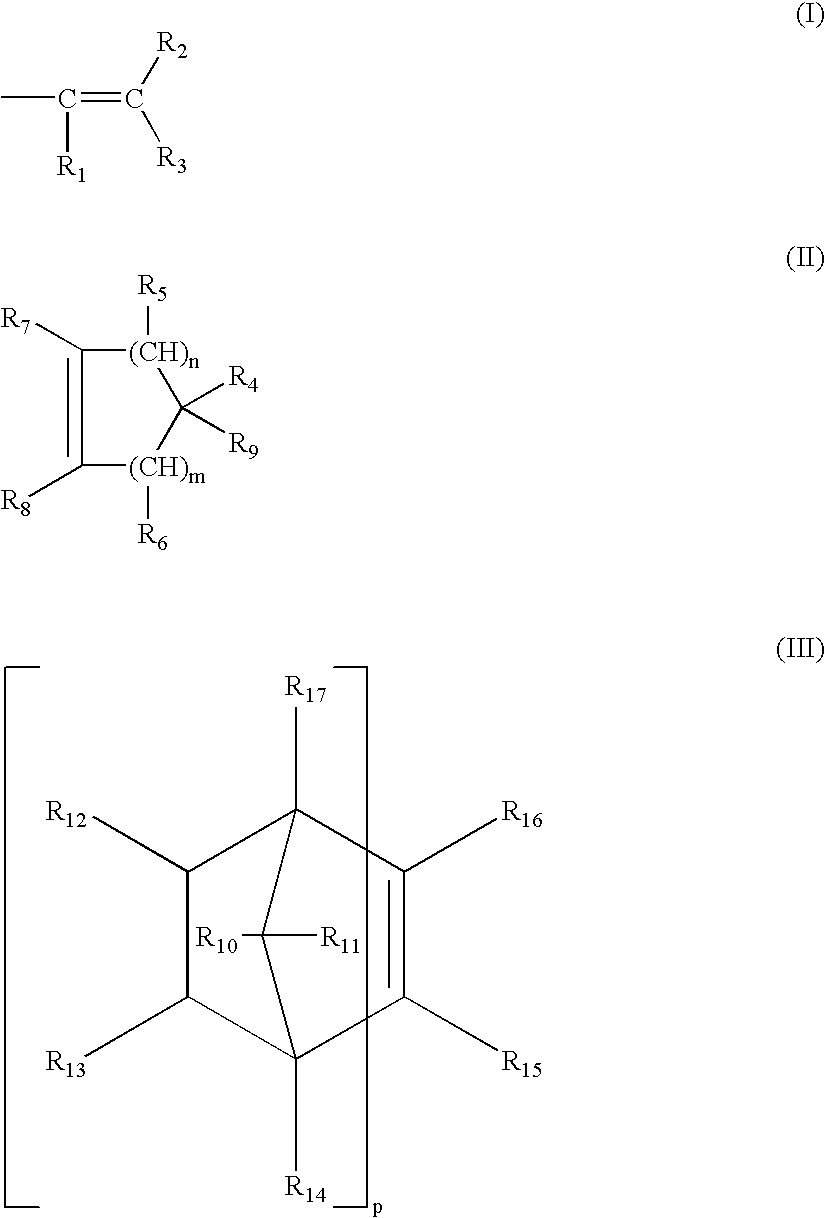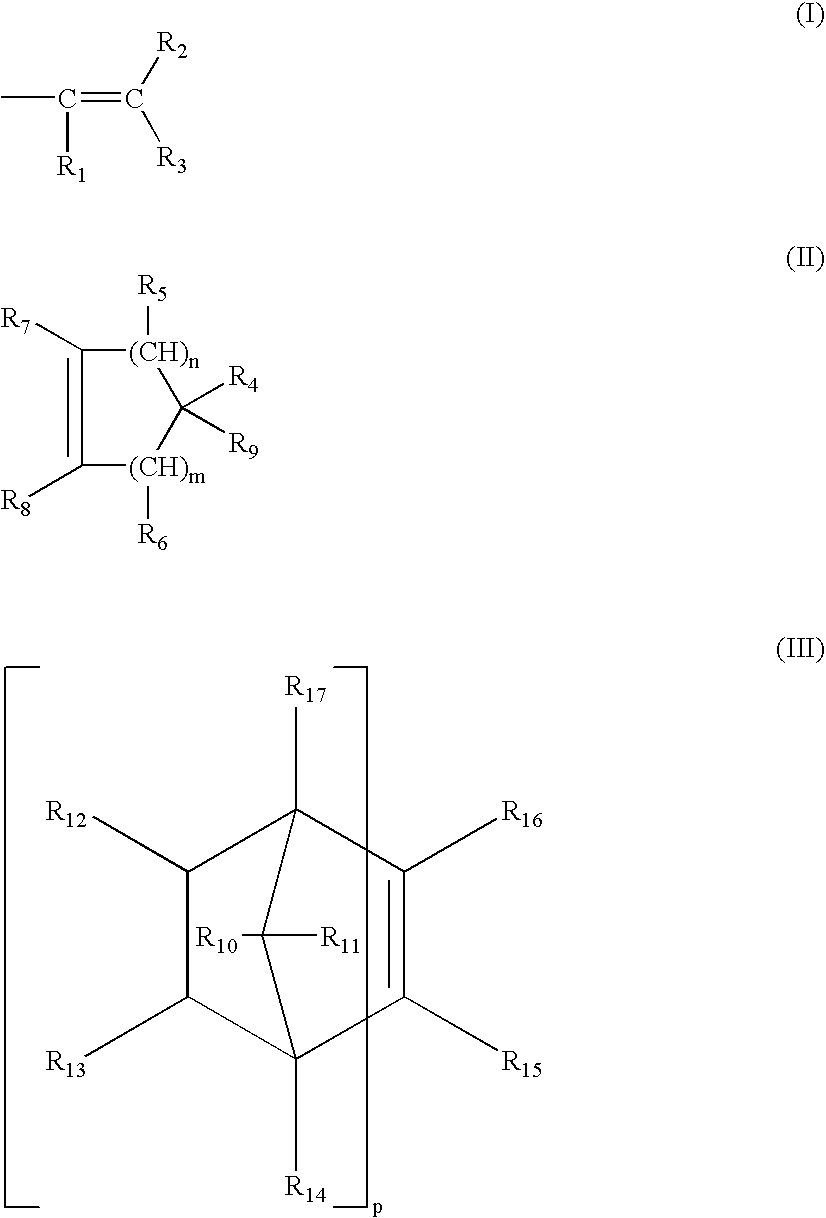Antimicrobial medical devices including silver nanoparticles
a technology of silver nanoparticles and medical devices, applied in the field of antimicrobial medical devices including silver nanoparticles, can solve the problems of silver nanoparticles, silver nanoparticles, silver nanoparticles,
- Summary
- Abstract
- Description
- Claims
- Application Information
AI Technical Summary
Benefits of technology
Problems solved by technology
Method used
Image
Examples
example 1
[0153]Unless otherwise stated, all chemicals are used as received. Oxygen and ion permeability measurements are carried out with lenses after extraction and plasma coating. Non-plasma coated lenses are used for tensile testing and water content measurements.
[0154]Oxygen permeability measurements. The oxygen permeability of a lens and oxygen transmissibility of a lens material is determined according to a technique similar to the one described in U.S. Pat. No. 5,760,100 and in an article by Winterton et al., (The Cornea: Transactions of the World Congress on the Cornea 111, H. D. Cavanagh Ed., Raven Press: New York 1988, pp 273-280), both of which are herein incorporated by reference in their entireties. Oxygen fluxes (J) are measured at 34° C. in a wet cell (i.e., gas streams are maintained at about 100% relative humidity) using a Dk1000 instrument (available from Applied Design and Development Co., Norcross, Ga.), or similar analytical instrument. An air stream, having a known perc...
example 2
Synthesis of Macromer
[0164]51.5 g (50 mmol) of the perfluoropolyether Fomblin® ZDOL (from Ausimont S.p.A, Milan) having a mean molecular weight of 1030 g / mol and containing 1.96 meq / g of hydroxyl groups according to end-group titration is introduced into a three-neck flask together with 50 mg of dibutyltin dilaurate. The flask contents are evacuated to about 20 mbar with stirring and subsequently decompressed with argon. This operation is repeated twice. 22.2 g (0.1 mol) of freshly distilled isophorone diisocyanate kept under argon are subsequently added in a counterstream of argon. The temperature in the flask is kept below 30° C. by cooling with a waterbath. After stirring overnight at room temperature, the reaction is complete. Isocyanate titration gives an NCO content of 1.40 meq / g (theory: 1.35 meq / g).
[0165]202 g of the α,ω-hydroxypropyl-terminated polydimethylsiloxane KF-6001 from Shin-Etsu having a mean molecular weight of 2000 g / mol (1.00 meq / g of hydroxyl groups according t...
example 3
[0167]A lens-forming formulation (polymerizable dispersion) containing Ag-nanoparticles and copper phthalocyanin (CuP) particles is prepared by mixing appropriate amount of following components: about 37.5% by weight of macromer prepared in Example 2, about 60 ppm CuP (copper phthalocyanin), about 15% by weight of TRIS, about 22.5% by weight of DMA, about 24.8% by weight of ethanol and. about 0.2% by weight of Darocure® 1173. CuP particles are added into the formulation by adding appropriate amount of CuP pigment stock dispersion in Tris, which is prepared by diluting more concentrated CuP-Tris suspension to lower concentration of CuP using TRIS.
[0168]As described in commonly owned co-pending U.S. patent application publication No. 2005 / 0013842A1, silver particles are formed in the formulation by using appropriate silver source or silver salt and stabilizer. For example, a silver stock solution (SSS) is prepared by adding appropriate amount of silver salt (e.g. silver nitrate), stab...
PUM
| Property | Measurement | Unit |
|---|---|---|
| diffusion coefficient | aaaaa | aaaaa |
| molecular weights | aaaaa | aaaaa |
| temperature | aaaaa | aaaaa |
Abstract
Description
Claims
Application Information
 Login to View More
Login to View More - R&D
- Intellectual Property
- Life Sciences
- Materials
- Tech Scout
- Unparalleled Data Quality
- Higher Quality Content
- 60% Fewer Hallucinations
Browse by: Latest US Patents, China's latest patents, Technical Efficacy Thesaurus, Application Domain, Technology Topic, Popular Technical Reports.
© 2025 PatSnap. All rights reserved.Legal|Privacy policy|Modern Slavery Act Transparency Statement|Sitemap|About US| Contact US: help@patsnap.com



